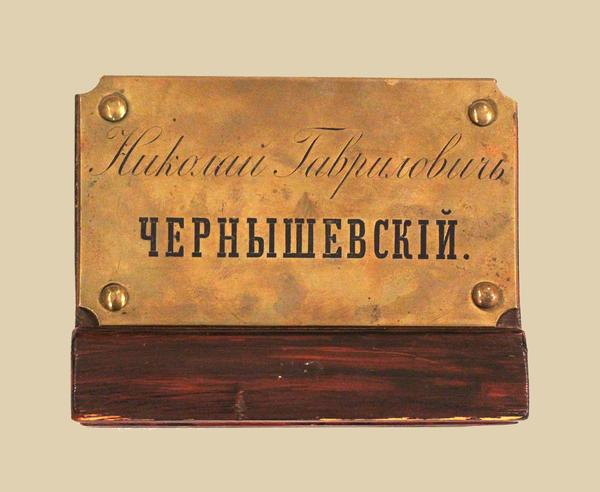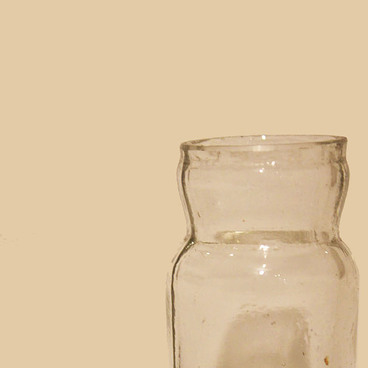Nikolai Gavrilovich Chernyshevsky moved to St. Petersburg with his wife Olga Sokratovna almost immediately after their wedding in 1853. According to the writer, the city offered more opportunities for him to engage in scientific, public and literary activities.
Chernyshevsky lived in apartment No. 4 of Esaulova’s tenement building in Bolshaya Moskovskaya Street in St. Petersburg for only 14 months, from May 20, 1861. As early as in November that year, the apartment was put under surveillance, but the gendarmes could not find anything suspicious.
Nevertheless, on July 7, 1862, the apartment was searched and its owner was unlawfully arrested, the pretext being Alexander Ivanovich Herzen’s post scriptum to one of his letters mentioning Chernyshevsky. There was no credible evidence against Nikolai Gavrilovich, but he was nevertheless put behind bars in Alekseevsky Ravelin of Peter and Paul Fortress.
The investigation went on for about a year and a half. Chernyshevsky continued working all that time. He wrote at least 200 author’s sheets of texts including the novel ‘What Is to Be Done? ’ subsequently published in Sovremennik (The Contemporary) magazine.
Olga Sokratovna left for Saratov letting the Morigerovsky couple take the copper name plate from the front door of the apartment in Bolshaya Moskovskaya as a keepsake. Thus, a common household item started turning into a museum exhibit that recalls an extraordinary historical person and his contemporaries, followers and associates.
An ordinary door plate from St. Petersburg acquired the value of a relic, and teacher, writer and publisher Alexander Nikiforovich Morigerovsky kept it safe. He gave the plate to Maria Petrovna Voskresenskaya, a woman doctor, who essentially followed the same path to higher education as Vera Pavlovna, a character from the novel ‘What Is to Be Done? ’.
From her, the plate was passed on to teacher Ivan Pavlovich Alexandrov from Cherepovets, who also cherished the name of the great democrat. Aleksandrov got to know that Chernyshevsky’s younger son Mikhail Nikolayevich was planning to open a museum and was looking for relics associated with the name of his father. In 1910, Ivan Pavlovich came to St. Petersburg and gave the plate to Mikhail Chernyshevsky as a gift.
After moving to Saratov, Mikhail Nikolaevich opened the Literature Memorial Museum in 1920. As its first director, M.N. Chernyshevsky immediately donated a number of relics including the door plate to the museum’s collection. Nowadays, it is part of the permanent exhibition entitled ‘His Motherland’s Worthy Son’.
Chernyshevsky lived in apartment No. 4 of Esaulova’s tenement building in Bolshaya Moskovskaya Street in St. Petersburg for only 14 months, from May 20, 1861. As early as in November that year, the apartment was put under surveillance, but the gendarmes could not find anything suspicious.
Nevertheless, on July 7, 1862, the apartment was searched and its owner was unlawfully arrested, the pretext being Alexander Ivanovich Herzen’s post scriptum to one of his letters mentioning Chernyshevsky. There was no credible evidence against Nikolai Gavrilovich, but he was nevertheless put behind bars in Alekseevsky Ravelin of Peter and Paul Fortress.
The investigation went on for about a year and a half. Chernyshevsky continued working all that time. He wrote at least 200 author’s sheets of texts including the novel ‘What Is to Be Done? ’ subsequently published in Sovremennik (The Contemporary) magazine.
Olga Sokratovna left for Saratov letting the Morigerovsky couple take the copper name plate from the front door of the apartment in Bolshaya Moskovskaya as a keepsake. Thus, a common household item started turning into a museum exhibit that recalls an extraordinary historical person and his contemporaries, followers and associates.
An ordinary door plate from St. Petersburg acquired the value of a relic, and teacher, writer and publisher Alexander Nikiforovich Morigerovsky kept it safe. He gave the plate to Maria Petrovna Voskresenskaya, a woman doctor, who essentially followed the same path to higher education as Vera Pavlovna, a character from the novel ‘What Is to Be Done? ’.
From her, the plate was passed on to teacher Ivan Pavlovich Alexandrov from Cherepovets, who also cherished the name of the great democrat. Aleksandrov got to know that Chernyshevsky’s younger son Mikhail Nikolayevich was planning to open a museum and was looking for relics associated with the name of his father. In 1910, Ivan Pavlovich came to St. Petersburg and gave the plate to Mikhail Chernyshevsky as a gift.
After moving to Saratov, Mikhail Nikolaevich opened the Literature Memorial Museum in 1920. As its first director, M.N. Chernyshevsky immediately donated a number of relics including the door plate to the museum’s collection. Nowadays, it is part of the permanent exhibition entitled ‘His Motherland’s Worthy Son’.



